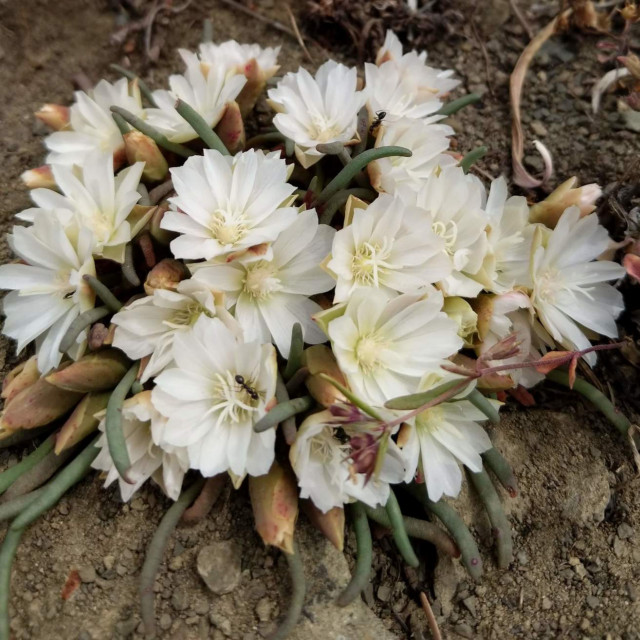COMMON NAME
Bitter root
SCIENTIFIC NAME
Lewisia rediviva
Plant family
(Montiaceae)
Plant group
Wildflowers and Herbs
Bitter root is a low-growing, native, perennial herbaceous plant native to western North America.
20 reports
9+
OBSERVERS
20+
OBSERVATIONS
Identification hints
Bitter root is often found in open rocky habitats with gravel soil. The leaves generally lay flat around the fleshy central taproot of the plant. The pinkish purple to white flowers are up to 2 inches in diameter and sit upon leafless fleshy stems that are up to 1 3/8 inches tall.
Did you know?
Indigenous peoples of western North America had numerous names for this species including, spetlum/sp̓eƛ̓m̓ or spetlem ("hand-peeled"), nakamtcu (Ktanxa: naqam¢u), and mo'ôtáa-heséeo'ôtse (Cheyenne, "black medicine"). The roots of this species were eaten in various preparations unique to each Indigenous group. Bitter root is now Montana's state flower.
DISTRIBUTION IN TH U.S.
Arizona
,
California
,
Colorado
,
Idaho
,
Montana
,
Nevada
,
Oregon
,
Utah
,
Washington
,
Wyoming
HABITAT
This plant grows in partial shade conditions such as open woodlands, sagebrush shrublands with pine, and oak or juniper savannas. Bitter root needs very well-drained soil and prefers gravel or loose rocks.
ATTRIBUTES
Leaves
Leaves of bitter root are succulent, narrow and linear, and form a rosette that withers by flowering time.
Flowers
Bitter root flowers are showy, up to 2 in in diameter across, and range from white to pinkish purple with 10 to 19 oblong succulent petals surrounding a cluster of stamens. One plant tends to produce many flowers close to the ground.
Fruits
Bitter root's fruit is an egg-shaped delicate capsule filled with 6-20 very tiny, shiny, round black seeds.
Bloom Time
Bitter root blooms in early spring from March to June depending on location.
See Menu
- 2021 Chicago Botanic Garden. All Rights Reserved.
-
Creative Commons
BY-NC-SA 4.0 - Terms of Use
- Privacy Policy
- Data Sharing and Citation Policies
- 2021 Chicago Botanic Garden. All Rights Reserved.



